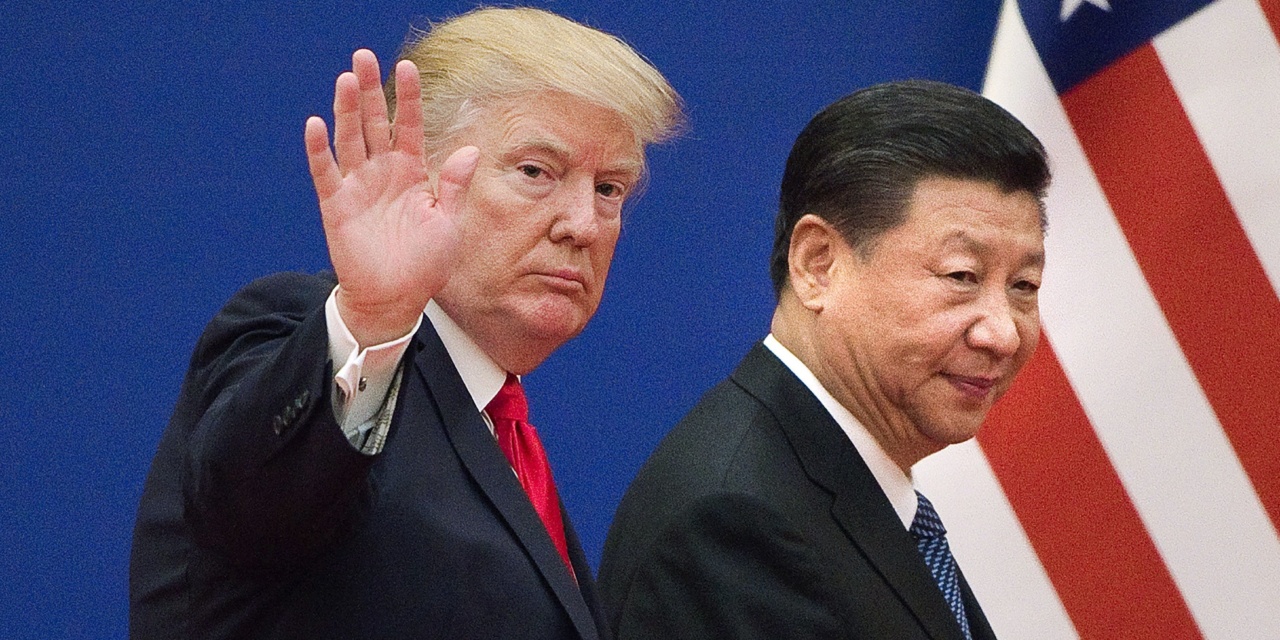Donald Trump and Chinese President Xi Jinping (Nicolas Asfouri/AFP/Getty)
Donald Trump’s latest trade-war tariffs against China take effect on Sunday, with no sign of a surrender by Beijing to measures that threaten an economic downturn in the US and around the world.
Another $116 billion of Chinese products are being hit with charges of 15%, adding to the $250 billion of Beijing’s goods that are already under a 25% duty.
Trump is also planning to slap the 15% charge on the remaining $240 billion of Chinese exports to the US on October 1, as well as raising the tariff on the original $250 billion to 30%.
US tariffs on foreign goods — not only from China but from areas such as the European Union and Japan — are now at their highest since the 1960s. The average tariffs on Chinese imports will reach 21.2%, up from 3.1% when Trump entered office in January 2017.
Anatomy of a Trade War
The Trump Administration rolled out the first tariffs on $50 billion of Chinese products in June 2018, soon after it imposed duties on steel and aluminum on countries from Brazil to Canada to South Korea.
The Administration added the 10% tariff to another $200 billion in September 2018. China responded with charges on $160 billion of US imports, almost all of the American goods exported to the People’s Republic.
This May, Trump raised the tariff from 10% to 25%, scuppering trade talks in Washington. But China refused to buckle to American demands on issues such as intellectual property, with President Xi Jinping invoking the “Long March” of the Communist Party against Nationalist rule in the 1920s and 1930s.
See A New “Long March”: China Prepares for Trump’s Trade War as Talks End
At the start of August, Trump abruptly announced the imposition of tariffs on the remaining $350 billion of Chinese goods. Two weeks later, the Administration eased back, implicitly accepting that stores and consumers would be hit in the run-up to Christmas: the new tariffs were delayed on %160 billion of goods such as laptops and smartphones, and suspended on $50 billion.
But on August 23 in a Twitter tantrum, Trump switched again, ordering the imposition of the charge on all $350 billion, and raising the tariff level across the board.
Meanwhile, China has raised tariffs on $75 billion of American goods this summer and halted purchases of farm products.
The Economic Cost
Trump has falsely proclaimed that the trade war will bring hundreds of billions of dollars into the US Government, and come at “no cost” to US manufacturers and consumers.
Economists have warned that the US economy may lose up to $1.3 trillion, with the average US household paying the price of more than $800 a year.
David French, the senior vice president for government affairs at the National Retail Federation, summarized, “It’s impossible for businesses to plan for the future in this type of environment.”
Roger Johnson, the President of the National Farmers Union, said, “Every time Trump escalates his trade war, China calls his bluff — and why would we expect any differently this time around? It’s no surprise that farmers are again the target.”
Trying to cover some of the economic and political damage, Trump announced a $16 billion bailout fund for US farmers in May.
See TrumpWatch, Day 854: Fighting Trade War, Trump’s $16 Billion Buy-Off of Farmers
Farm earnings fell at an annual rate of $11.8 billion from January to March. Exports of soybeans have been almost wiped out, and other crops have been affected.
Almost two weeks ago, the bond market’s “inverted yield curve” — an inevitable marker of recession over the past 50 years — occurred for the first time since 2008, and consumer confidence reached a seven-month low.
Federal Reserve chairman Jerome Powell, without naming Trump, cited the trade war as a major cause of an impending downturn. The remark further angered Trump, who has waged a campaign of insult against Powell and the Fed for not lowering interest rates.

